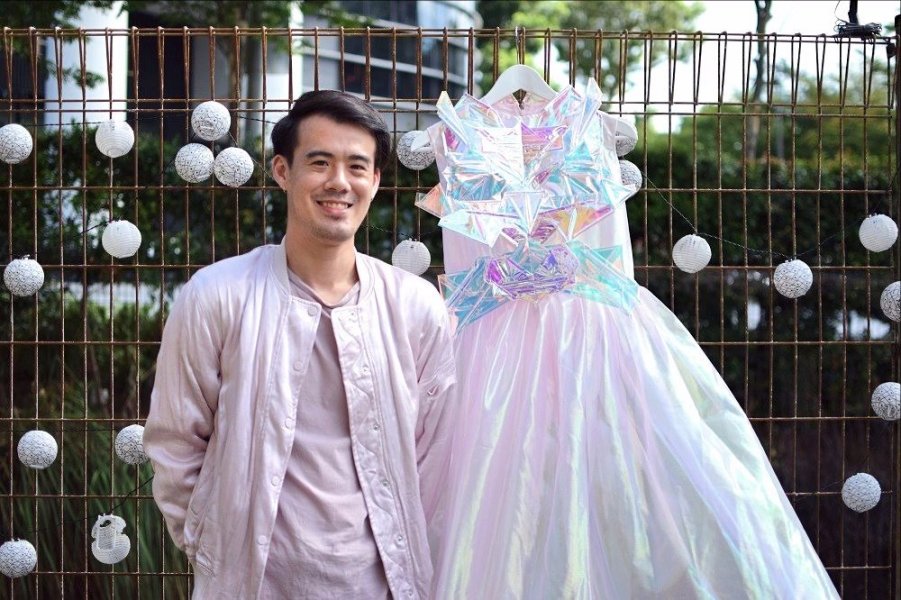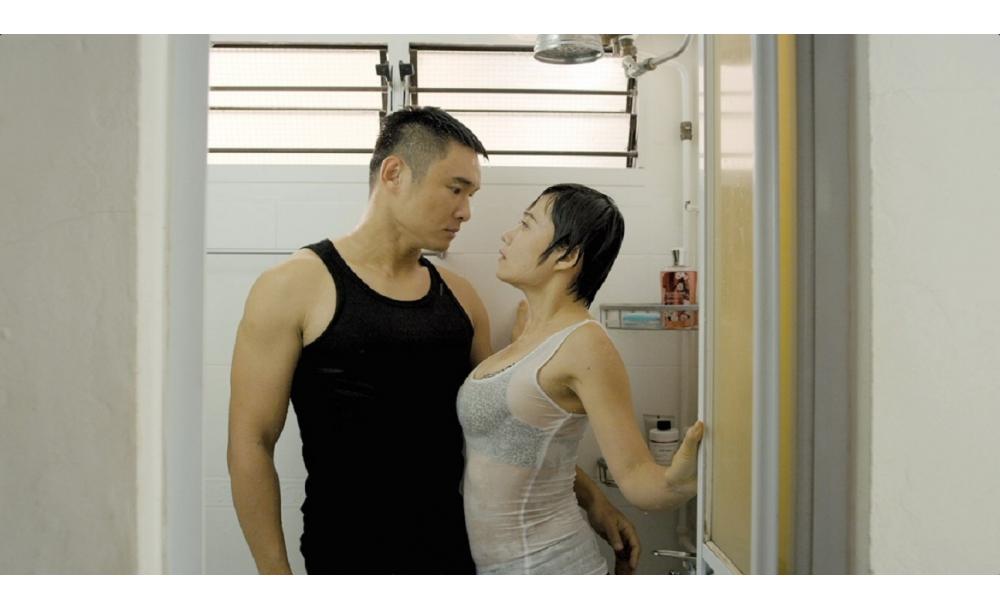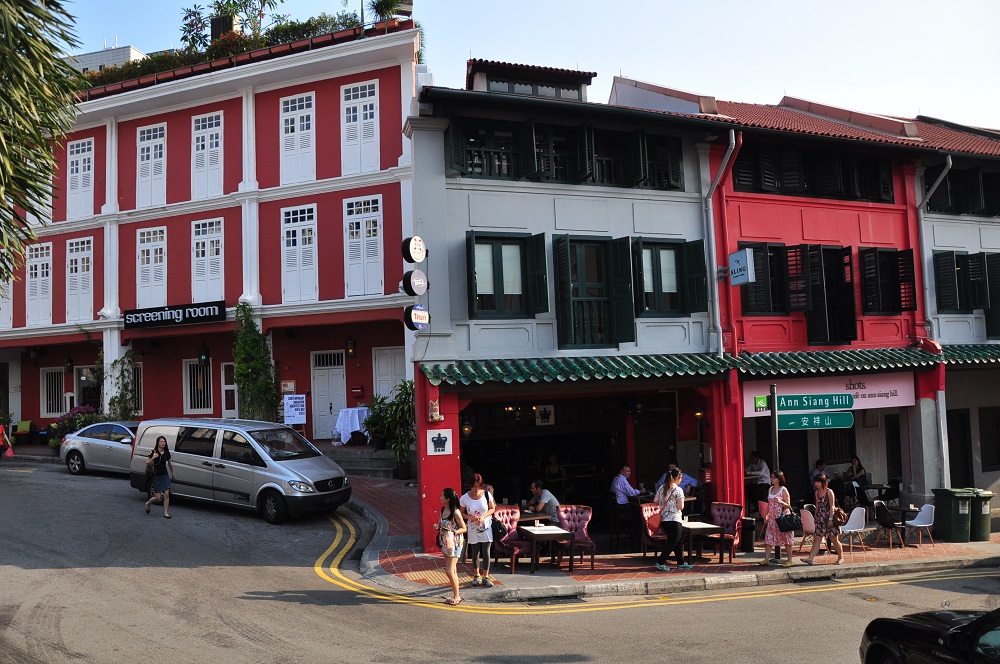With the Singapore Tourism Board’s traveling art showcase Singapore Inside Out: Tokyo just around the corner, we sat down with three of the featured Singaporean creatives, to talk about art and what it means to be an artist in Singapore.
Zulkifle Mahmod

Many would describe Zul Mahmod as a reticent man. But you’ll quickly realize the 42-year-old artist is just a veteran who’s fiercely—but quietly—passionate about his art. Having been in the local sound art scene since 2004, he’s witnessed the entry and rise of electronic music, and had to grapple with what exactly makes a “Singapore sound”.
When he isn’t making headlines for winning the Soichiro Fukutake Prize, a first-time award created specially for his work at the Singapore biennale, he’s strolling the streets and hanging out at coffeeshops, listening to “what all these uncles and aunties are talking about”. Sound art might still be a niche on the island for now, but seeing it grow into a mass-appreciated art form is the least of Mahmod’s worries. He’s got sounds to collect.
How did you get into sound art?
It was quite accidental; I graduated in ’97 doing sculpture. In 2001, I was in Norway for my artist-in-residence, and met this Dutch artist who was doing computer music back when it was still kind of alien. He introduced me to that software and I sort of picked it up. I think my breakthrough was after the Venice Biennale in 2007, in the sense that when I came back, people were brave enough to start commissioning sound works.
Tell us about your work.
Usually my work is site-specific. It’s about doing something that responds to a particular space, because in a space you have the acoustic itself, the historical site of a space—there’s more dialogue in that. I love field recording, so I go into spaces just to record; I can go in to Labrador Park today, just record for one hour—and if I come back later for another hour, it’ll be a totally different set of sounds. I think that’s the beauty of it; the discovery.
This year’s theme is about the hyper-real, so I thought it’d be quite interesting to explore that in the context of Singapore. Because it’s a developing city, everything needs to be heightened, in terms of the visuals and sound. And sometimes that affects how we think, in terms of living in the city. So for that I recorded quite a number of sounds in the city and in nature. I created this mirrored dome, with a soundscape inside—because it’s enclosed and reflective, the sound bounces to create a 360-degree experience when you’re inside.
Is your work specific to Singapore?
I think it’s very hard to dictate what is the “Singapore sound”, because you can get most of these sounds in other developing cities. Over the years I’ve realized most of the sounds in developing cities are the same—construction. I think what’s different is the (mix of) languages here—a lot of different languages, your MRT announcements… But I try not to emphasize so much on the Singapore aspect. I never feel like I have to showcase that. Most of my materials are from here, but it can be placed anywhere to get the sense out of it.
You’ve done SGIO before. How do you feel representing Singapore again this time round?
Singaporean artists have been on the global stage for a long time, so I guess this is just another platform. This isn’t just to represent the country; it’s to get (people outside Singapore) excited, and let them know that there are other things happening in Singapore. Also, there are the collaborations with some of the Japanese artists and designers there—it’s a good start to have that platform in Tokyo.
Josiah Chua

The first thing you should know about 29-year-old Josiah Chua is that he is obsessed with Japan. So exhibiting at SGIO: Tokyo, his first exhibition outside of Singapore, is perfect. “It’s like an upgrade; finally your country is recognizing you and bringing you out of the country—and they chose Japan to bring me back to, it’s like my second home,” he said excitedly.
The fashion designer, who works part-time as a stylist, often shuttles between Singapore and Japan, the latter’s influences showing in his works. His latest capsule collection is an ethereal mass of light-reflecting fabrics and iridescent pastels, inspired by none other than Japanese anime character Sailor Moon. As such, many often mistake his work for cosplaying, something Chua both laments and embraces.
Still, there’s no denying that his design style is distinctive. He’s won awards both locally and abroad, and even had a piece from his label, which is stocked in Tokyo, picked up by Lady Gaga herself. And despite his lack of a buying audience here, he is firm that his bold creations are here to stay.
Tell us about this collection you’re debuting at SGIO: Tokyo.
Growing up I liked Sailor Moon, and I think it’s very appropriate for this year’s theme. If you watched the series, you’ll know that when Sailor Moon transforms, she goes into hyper-space, or like a space of her own. And then she starts going through these streams of colorful rainbow lines. And I think the whole concept is about being frozen in time. I just remember really liking the whole color palette of the transformation, and I wanted to capture that moment in time.
How would you describe your style, and how that relates to cosplay?
Most of the time I like to explore fantasy-based themes; it’s all about becoming a character. A lot of people often mistake my work for cosplay, because I explore themes that are very close to how cosplayers would interpret characters and dress up like them. Cosplayers want to be the character—they’re supposed to go down to the details and mimic the character’s clothing. But for me, I get inspired by the character, and I try to re-interpret their essence and aesthetic in my own way.
What is it like for a fashion designer in the local environment?
It’s tough because of what people are open to. I think we used to experiment a lot more before; I don’t know why people have become a lot more… normcore. It might be the trends, because now people are very hyped about brands like Balenciaga and Vetements. I like themes that are a bit more showy, a bit less wearable—so it’s understandable why our market isn’t receptive sometimes to some kinds of designs. But I wouldn’t say that we have no fashion taste, and in terms of skills and creativity, we definitely have it. It’s just that maybe our market is not big enough to embrace that whole creative community.
How do you reconcile not being able to reach out to a mass audience?
Who you design for determines how your designs will be like, but I don’t really have a single target audience in mind, because I want to express something. I want to explore new things to keep my works fresh and my creativity going. If I were to design clothing for everyday people, then I would just be designing Giordano stuff—T-shirts, and just tweaking denim jeans in different washes; I wouldn’t even be creating new silhouettes, or experimenting with new materials. My constant struggle is how to not sell out, to stay true to myself, and still make money.
Atelier HOKO

They’ve been called crazy, bo liao (too free) and other such flattering insults before. But Alvin Ho and Clara Koh of Atelier HOKO take absolute delight in their work. Both 35, the couple are co-creative directors of a research collective that specializes in looking at normal, everyday things, and stepping back to examine them from a new point-of-view. A previous project saw them questioning why and how an apple is typically held the way it is—pivoting between two fingers like a globe—and why it’s stacked precariously at fruit stands on a narrower base, as opposed to its wider top.
“It’s just things that people don’t usually look at or question; they take it for granted,” explained Koh. Their research typically culminates in a publication under a self-published series titled Science of the Secondary, and an accompanying experiential installation. For their exhibition at SGIO: Tokyo, they will be spotlighting cups, to question drinking behaviors and gestures.
For all their oddities, Atelier HOKO are a down-to-earth pair, who are genuinely curious at dissecting mundane subjects, and aren’t afraid to laugh at their own work. “It’s very easy to just dismiss this whole body of research as complete nonsense, which is fine,” Ho said.
“But we enjoy doing it lah; otherwise there’s nothing to do in life.”
What inspired your looking at the “science of the secondary”?
AH: We were trained in industrial design, and product design. I guess the expectation of a product designer is to produce things and design objects, but we don’t like it so much; we felt that there were enough things (in the world) already, and we don’t want to participate in the process of making things. So we prefer to step back and examine very simple, everyday things. It’s like going back to square one, or zero—the fundamental conditions of all these things. For example, if I’m a designer, then my responsibility would be to design a cup. But maybe it would be more interesting to see how people drink, first.
CK: We think that there’s something to everything that we don’t really know of. We think we know about an apple, or a cup; but actually we don’t. So we try to un-learn and un-know.
What can audience members expect at your exhibition for SGIO: Tokyo?
CK: When you enter the space, there’s a row of 17 different cups, and each cup is responding to a certain kind of drinking behaviour. There’s no information at the cups, so they have to order a drink through the menu—either tea or coffee (no sugar, no milk)—at the counter, and choose one cup that they would like to drink from. Then they just sit down, and drink. There’s a cup that allows the drink to go through the handles, so when you drink you can actually feel the temperature of the drink.
AH: If you notice, Asians don’t use cups with handles, but I don’t know why these handles became popular in our context. When there’s the presence of a handle, you’re not able to feel the temperature of the drink; so in a way the handle robs you of the tactile sensation of drinking. I think drinking is a full-body experience, just like walking.
Do you feel the need to embody a local identity as an artist representing Singapore on a global stage?
AH: We don’t believe in this whole idea of local—it’s not our point, because we have an audience in other countries as well. For our research subject, it’s always a thing, but it has to be something that is in everyday, very universal—not something local, like… kueh.
CK: We’re not going to make a kopitiam cup; it’s not what we’re interested in, and we don’t feel it’s our responsibility to promote these kopitiam cups.
AH: For us, we like to hone our approach; that is important, not the content. If not, you’re dependent on the content. Like if you want to look at kopitiam cups, you’re already hanging on to the whole nostalgia, history angle, so you’re using that as part of your creation, which is okay, but you have to go beyond that—otherwise you’re just hitching a ride.
Singapore Inside Out: Tokyo is happening Aug 25-27 at the BANK Gallery in Tokyo. More information here.





